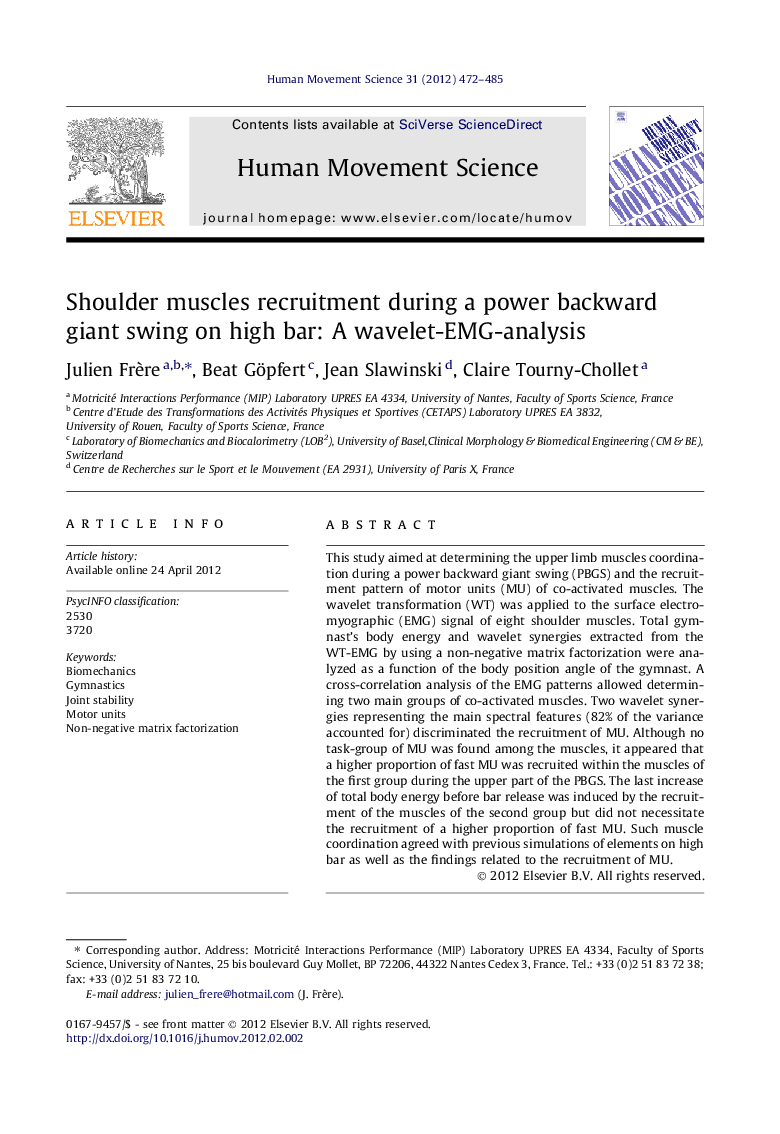| Article ID | Journal | Published Year | Pages | File Type |
|---|---|---|---|---|
| 928545 | Human Movement Science | 2012 | 14 Pages |
This study aimed at determining the upper limb muscles coordination during a power backward giant swing (PBGS) and the recruitment pattern of motor units (MU) of co-activated muscles. The wavelet transformation (WT) was applied to the surface electromyographic (EMG) signal of eight shoulder muscles. Total gymnast’s body energy and wavelet synergies extracted from the WT-EMG by using a non-negative matrix factorization were analyzed as a function of the body position angle of the gymnast. A cross-correlation analysis of the EMG patterns allowed determining two main groups of co-activated muscles. Two wavelet synergies representing the main spectral features (82% of the variance accounted for) discriminated the recruitment of MU. Although no task-group of MU was found among the muscles, it appeared that a higher proportion of fast MU was recruited within the muscles of the first group during the upper part of the PBGS. The last increase of total body energy before bar release was induced by the recruitment of the muscles of the second group but did not necessitate the recruitment of a higher proportion of fast MU. Such muscle coordination agreed with previous simulations of elements on high bar as well as the findings related to the recruitment of MU.
